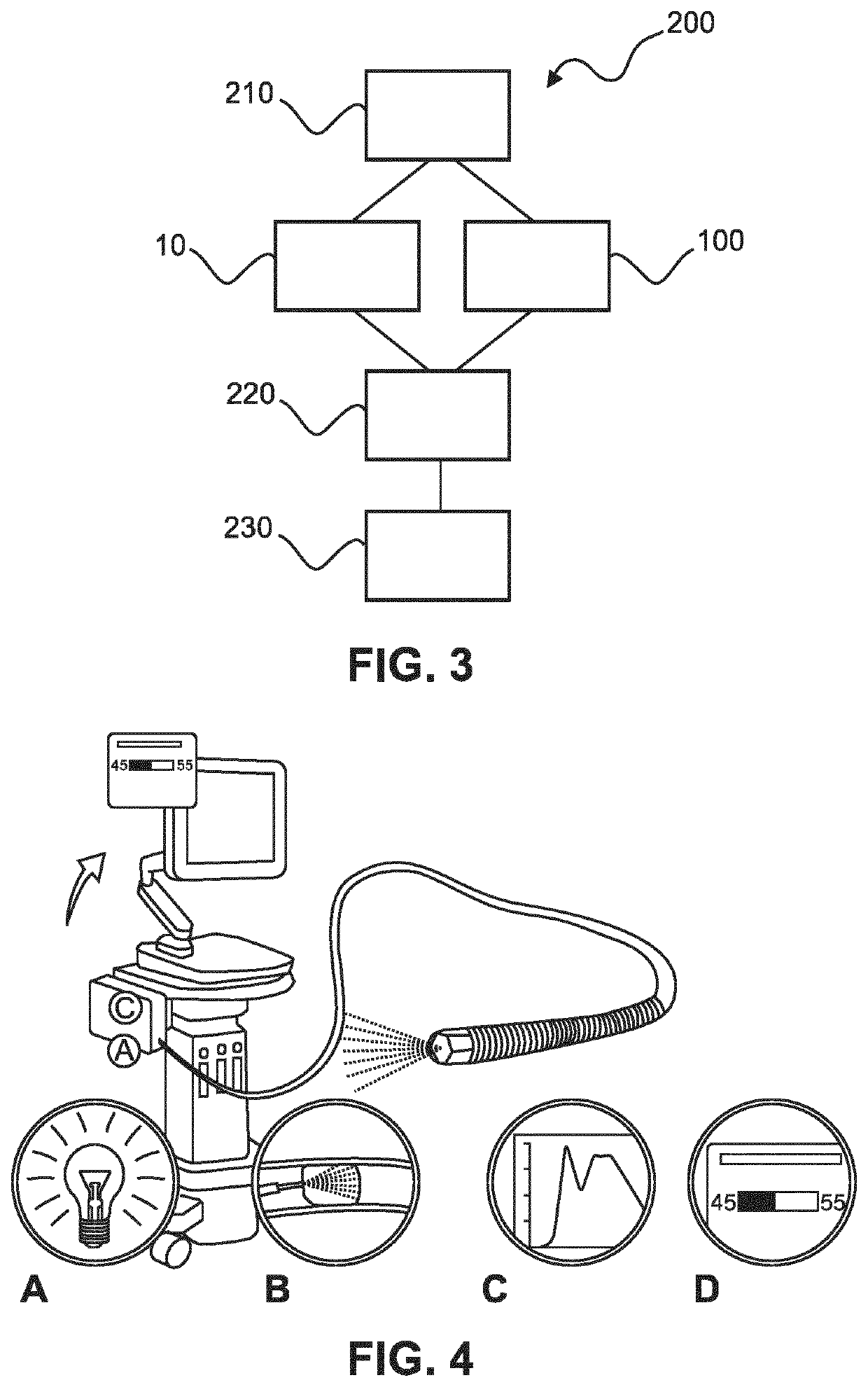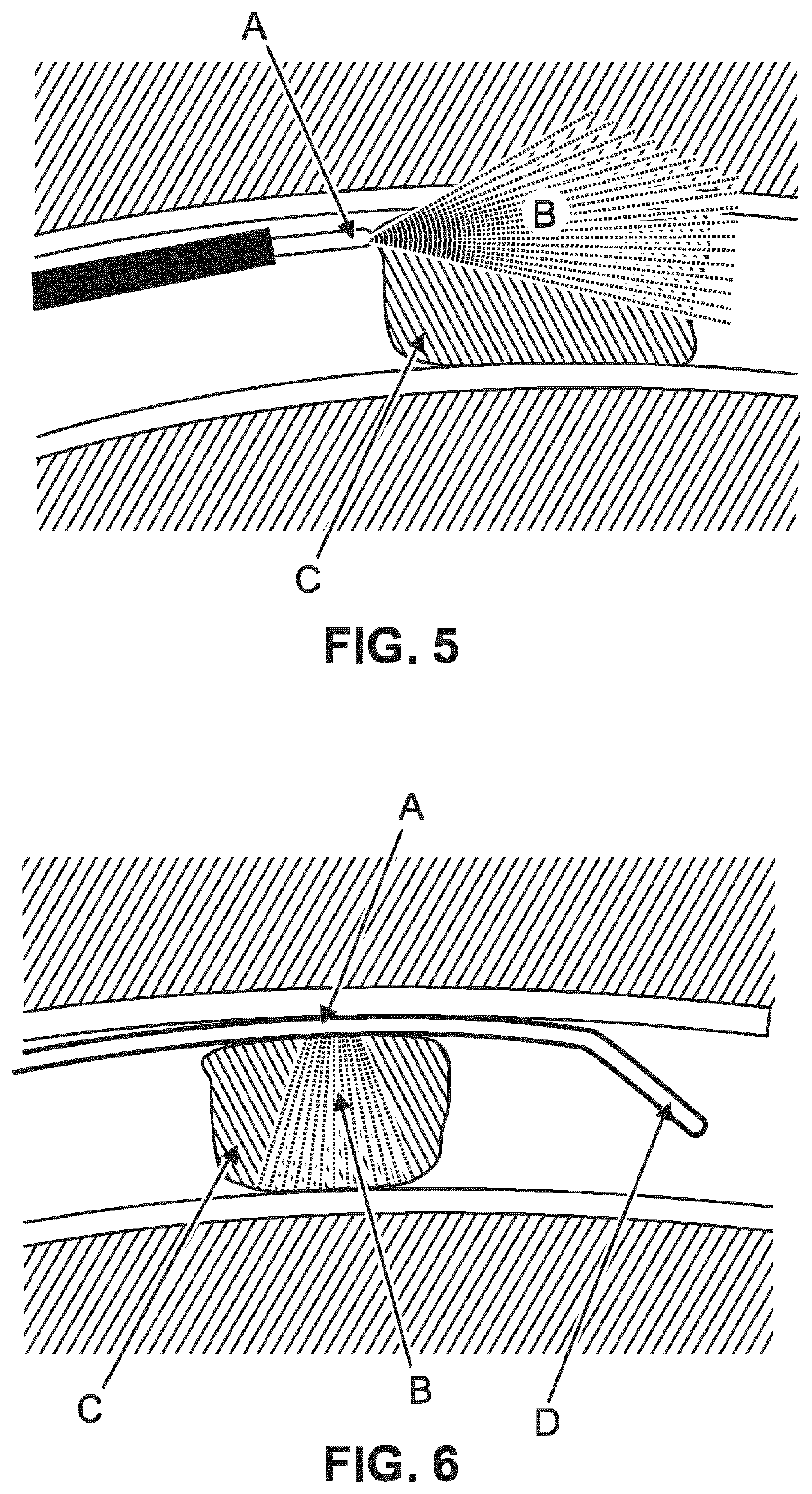Intravascular optical device
an intravascular optical and micro-catheter technology, applied in the field of intravascular optical devices, can solve the problems of increasing medical complications, increasing treatment costs, and prolonging procedure tim
- Summary
- Abstract
- Description
- Claims
- Application Information
AI Technical Summary
Benefits of technology
Problems solved by technology
Method used
Image
Examples
Embodiment Construction
[0099]FIG. 1 shows an example of an intravascular device 10. The device comprises an elongate member 20, an optical fiber 30, and at least one optical interaction element 40. At least a part of the elongate member is configured to be inserted into a part of a vascular system of a patient. At least a part of the optical fiber is located within the elongate member. The optical fiber is configured to transmit optical wavelength radiation. The intravascular device is configured to emit optical wavelength radiation out of the elongate member in at least two optical radiation beams for being scattered and / or reflected by a portion of the vascular system. The emission of the at least two optical radiation beams comprises interaction of the transmitted optical wavelength radiation with the at least one optical interaction element. The intravascular device is configured to collect at least some of the scattered and / or reflected optical wavelength radiation and couple the at least some of the...
PUM
 Login to View More
Login to View More Abstract
Description
Claims
Application Information
 Login to View More
Login to View More - R&D
- Intellectual Property
- Life Sciences
- Materials
- Tech Scout
- Unparalleled Data Quality
- Higher Quality Content
- 60% Fewer Hallucinations
Browse by: Latest US Patents, China's latest patents, Technical Efficacy Thesaurus, Application Domain, Technology Topic, Popular Technical Reports.
© 2025 PatSnap. All rights reserved.Legal|Privacy policy|Modern Slavery Act Transparency Statement|Sitemap|About US| Contact US: help@patsnap.com



